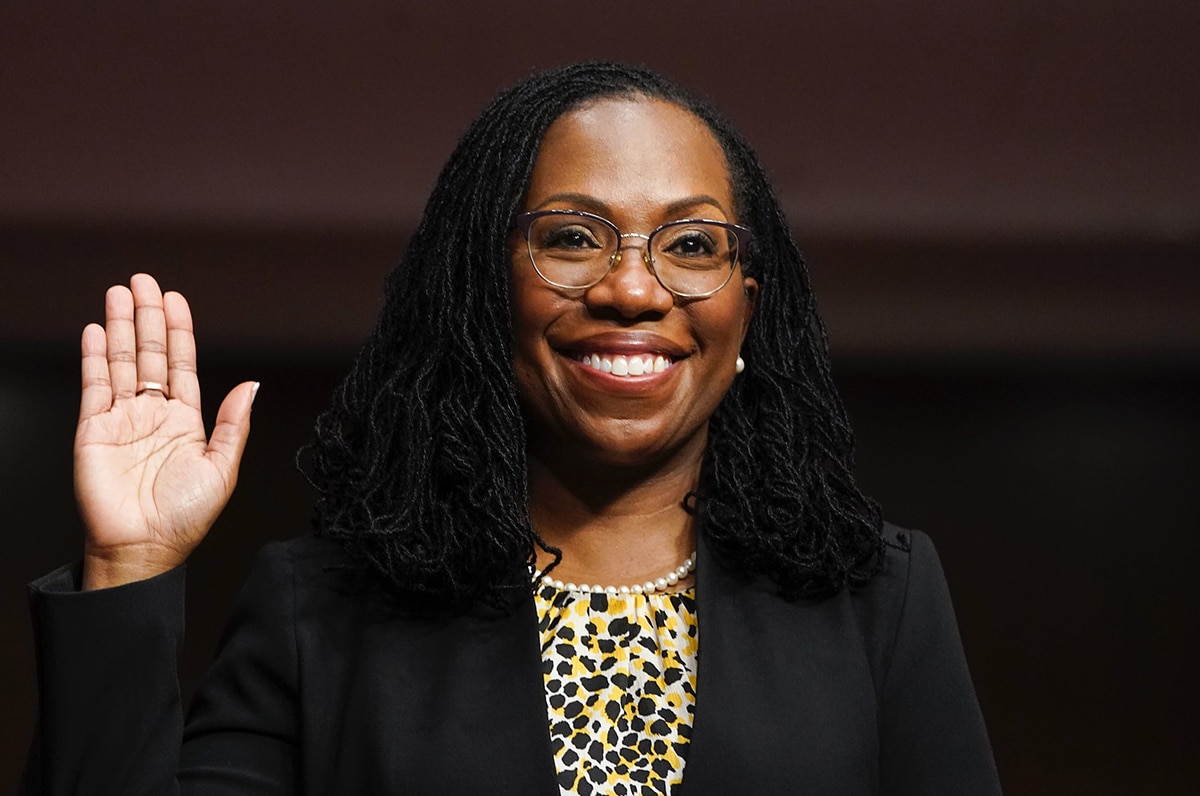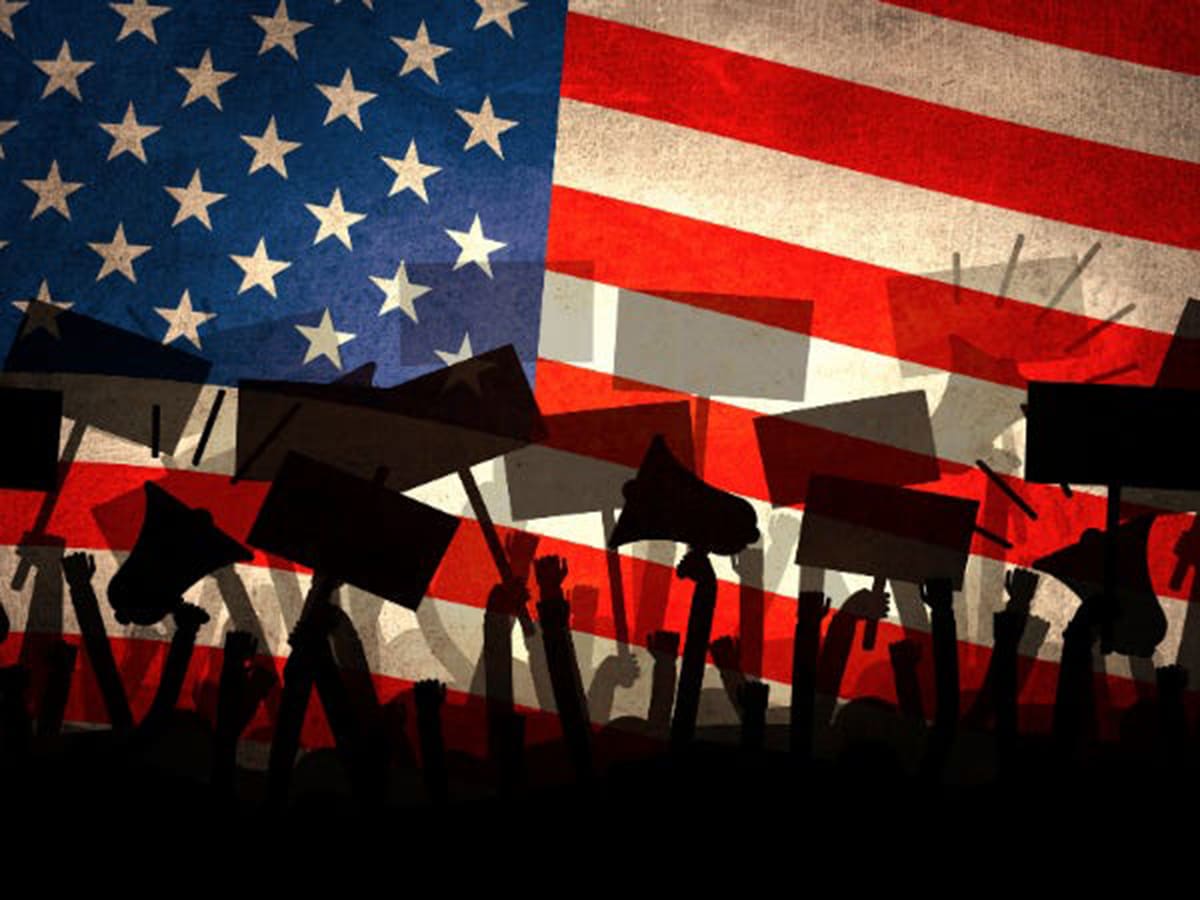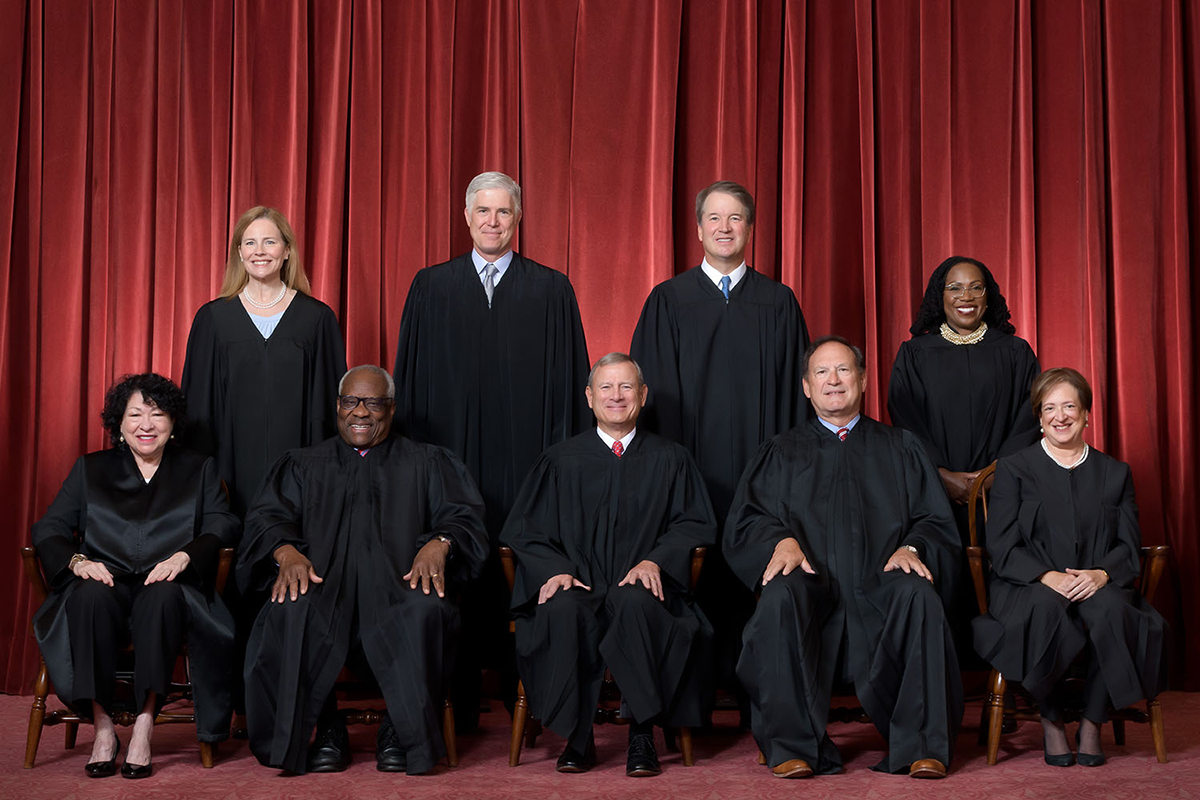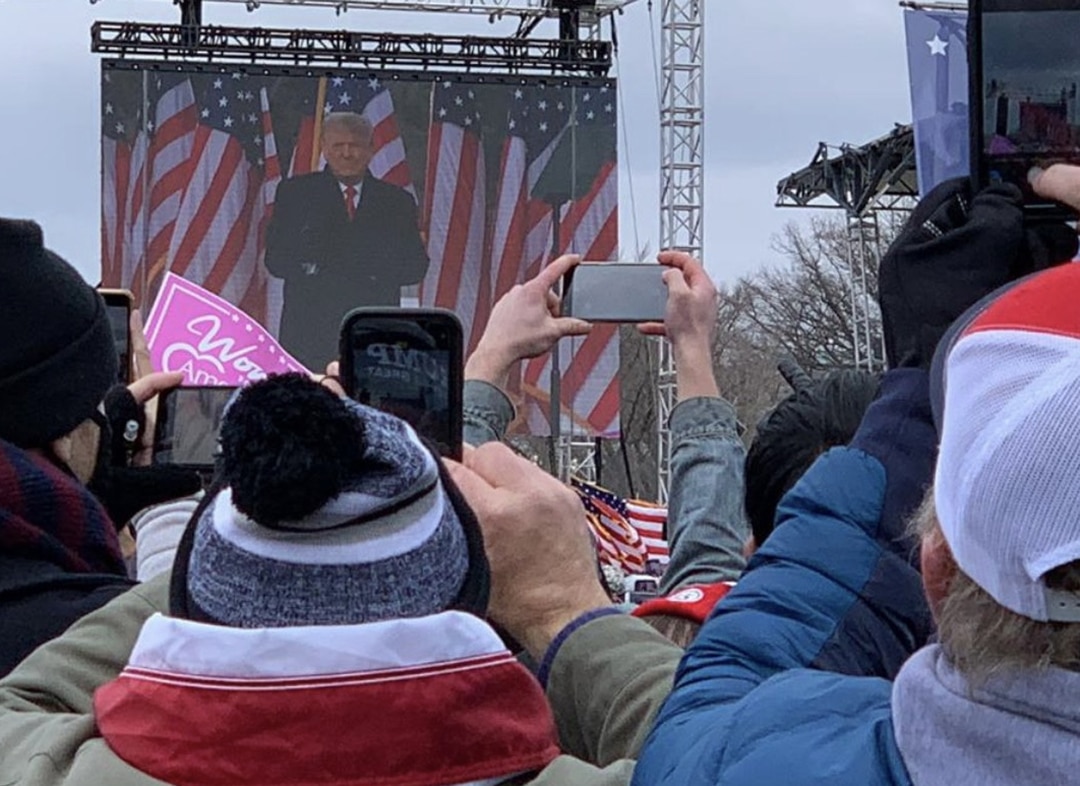

The First Amendment Takes a Beating in the Supreme Court
JACKSON: So my biggest concern is that your view has the First Amendment hamstringing the government in significant ways in the most important time periods…
Can you help me? Because I’m really — I’m really worried about that because you’ve got the First Amendment operating in an environment of threatening circumstances from the government’s perspective, and you’re saying that the government can’t interact with the source of those problems.
“Can you help me?” Yes, I would love to help you, Justice Jackson, to a less challenging line of work… Hamstringing the government, Good God!
That a line about “the First Amendment hamstringing the government” was uttered by one Supreme Court Justice is astonishing enough. Listening as none of the other eight pointed out that the entire purpose of the First Amendment is to “hamstring” government from interfering in speech was like watching someone drive a tank back and forth over Old Yeller. I needed a bite-stick by the end of the hearing.
A lot of us who’ve spent the last years working to expose the federal government’s myriad new content control bureaucracies had high hopes this case might stop some of the bleeding on the civil liberties front. After listening to Jackson’s “Can you help me?” rant, the game seems up (at least for now) at the judicial level.
We’ve been had. I wondered last fall why the federal government didn’t just take the mild rebuke they received from the Fifth Circuit Court of Appeals and move on. Now I see the benefit in going to the high court. The government is on the precipice of gaining explicit permission to fully re-charge its censorship machine, potentially leaving this new arm of the surveillance state more empowered than before.
Principal Deputy Solicitor General Brian Fletcher opened his presentation to the Supremes with a reasonable-sounding thesis.
“The government may not use coercive threats to suppress speech,” he said, “but it is entitled to speak for itself by informing, persuading, or criticizing private speakers.”
With just occasional objections from Justices Samuel Alito and Clarence Thomas, Fletcher from there was able to proceed with what I’d characterize as less a legal argument than a public relations re-write.
This case burned up lower courts because district and appellate judges were alarmed by the sudden proliferation of high-volume, state-sponsored content-flagging programs that collectively serve as an industrial scale content-surveillance operation. From the Foreign Influence Task Force (FITF) of the FBI and the Office of the Director of National Intelligence (ODNI) to quasi-private content-review programs like the Election Integrity Partnership created at the behest of the Departments of Homeland Security and State, the federal government has quickly formed a huge bureaucracy for firehosing “requests” to Internet platforms. When coupled with regulatory threats, requests amount to a forced “partnership” on moderation.
This is why Appellate Judge Don Willett of the Fifth Circuit compared the flow of content demands to the fabled “offer you can’t refuse” of the mafia: “That’s a real nice social media platform you got there. It’d be a shame if something happened to it.”
Fletcher, with the seeming cooperation of most of the Justices, re-framed these requests as a handful of gentle recommendations, mostly made in the past, mostly in one extraordinary “public health crisis,” Covid-19.
Never mind that the theory of the case was that the plaintiffs were suppressed when they corrected government misinformation in that episode (a piece coming later today will explain), or that the evidence described interventions in a broad range of topics in no way limited to Covid-19. The colloquy re-framed the outing of extravagantly funded, ongoing content-flagging programs, designed by veterans of foreign counterterrorism operations and targeting the domestic population, as a debate about what Fletcher called “classic bully pulpit exhortations.”
I must have missed this part in civics class. Teddy Roosevelt lauded the “bully” pulpit of the presidency as a forum for doing what presidents are elected to do: use their platform to make a convincing public case to voters who hold the real power in a democracy. The Biden conception of a “bully pulpit” apparently involves leaning on media distributors in private to quiet speech. Are those two things even remotely similar?
The context of Flaherty’s “classic bully pulpit exhortations” quote was another incredible moment. He said, effectively, “There were no overt threats against the companies, except for all those times my clients did it in public, in ways conspicuous enough to generate national headlines.”
The federal government in the digital surveillance age has become so arrogant that it not only strong-arms targeted Internet companies, it does so in a way that lets the public see what they’re doing:

When the Biden administration was unhappy that companies like Facebook weren’t censoring enough — this included evidence that Facebook was failing to reply with appropriate speed with news that videos by the likes of Tucker Carlson had been given, say, a “50% demotion for seven days” — they repeatedly went public with threats.
Biden did it on the campaign trail, saying Section 230 should “immediately be revoked” because “it is propagating falsehoods.” Surgeon General Vivek Murthy compared speech to disease, saying “limiting the spread of health misinformation is a moral and civic imperative” and proposing “appropriate legal and regulatory measures that address health misinformation.”
Renee DiResta, Research Director of the DHS-sponsored Stanford Internet Observatory, told NPR that whether it was posts about vaccines or election fraud, “There’s hope that we can cure all of the problems of the world by amending [Section 230].”
Fletcher had to read off a list of greatest hits like these as a means of downplaying what took place:
I think both the Fifth Circuit and my friends have really said that the crux of what they claim was coercion here was what happened in July of 2021 when the Surgeon General, the White House Press Secretary, and the President himself made statements criticizing the platforms’ practices on misinformation and false statements about COVID vaccines and calling on them to do better.
I think it’s really troubling, the idea that those sorts of classic bully pulpit exhortations, public statements urging actors to behave in different ways, might be deemed to violate the First Amendment.
The unnerving part about yesterday’s hearing was that once Justices like Jackson started in on Aguinaga, there was very little in the way of pushback from other judges, not even the ones who’d previously signaled strong interest in the case. Though Alito tried to protest that the kinds of communications that flowed from the FBI and the White House to Facebook and Twitter would never happen to the Associated Press or the Wall Street Journal, he didn’t explain the distinction in stark enough terms. The other judges seemed confused on this point. Here’s a snippet from Elena Kagan:
KAGAN: Decades ago, it happened all the time… which is somebody from the White House got in touch with somebody from The Washington Post and said this will — this will just harm national security, and The Washington Post said, okay, whatever you say… was that coercion?
The situations aren’t remotely analogous. What’s happening now is a wide-scale partnership agreement between intelligence/enforcement agencies and media distributors, not media outlets themselves. Unlike the Pentagon Papers case, the government here has gone over the heads of the press, creating an Avengers-like “Protector Initiative” in which content can be bounced or de-amplified without involving the source of the speech in the discussion.
As Glenn Greenwald noted yesterday on System Update, this returns us to the eternal paradox of security initiatives in the War on Terror age, where the very vastness of the offense against civil liberties becomes the government’s best defense against legal challenge. When individuals in the last twenty years attempted to sue the federal government for everything from illegal seizure of personal information to wrongful placement on the terror watch list to rights violations in targeting even an American citizen in a drone attack (I covered that case), the government would often reply that plaintiffs failed to show proper standing by proving the injury was caused by the secret program. Of course, they were often unable to obtain that proof precisely because the program was secret.
This is how Fletcher was able to level this argument, his best by the way: “Respondents don’t have standing at all because they have not shown an imminent threat that the government will cause a platform to moderate their posts in particular.”
Even though there is evidence that the White House and the FBI sought to suppress everyone from Carlson to the maker of a meme satirizing White House vaccine messaging as being like late-night mesothelioma ads, plaintiffs like Dr. Jay Bhattacharya had a harder time proving beyond a doubt that their personal suppression was the direct result of government intervention.
The standing issue matters. There’s a reason courts aren’t permitted to simply review the legality of government actions, without specific conflicts to judge. Murthy seems a case where the broad illegality is obvious — some of the agencies involved are barred by statute from meddling in domestic affairs, and the sheer scale of the surveillance operations from the FITF and DHS are appalling in themselves — but the individual cases are indeed harder to make. My worry is that if the Court rules against the plaintiffs based on these “traceability” issues, that will be interpreted as an endorsement of these plainly abusive programs.
Murthy already represents a major public relations victory for the Executive Branch. After roughly two years in which momentum for shutting down government censorship programs seemed to be gaining, and episodes like Bhattacharya’s punctured the myth that such bureaucracies only targeted “misinformation,” yesterday’s hearing will help restore the basic narrative that the activities revealed earlier in this suit and in the Twitter Files was little more than good-faith efforts by a concerned government trying to stop “harm” in a unique historical emergency. As Brown Jackson put it, “What would you have the government do?”
Yesterday felt like a gut punch, but I haven’t had a chance to hit the phones yet to confirm the suspicion. I’ll be chatting with Racket subscribers on this topic early tomorrow; I’m in transit but will send out an announcement as soon as I have a time figured out. Until then, advice on coping mechanisms is welcome. Is there a yoga pose that will erase memories of that hearing audio? Directions to a gateway to an alternate universe a kind reader wouldn’t mind sharing? I’ll take whatever good news you’ve got at this point.




